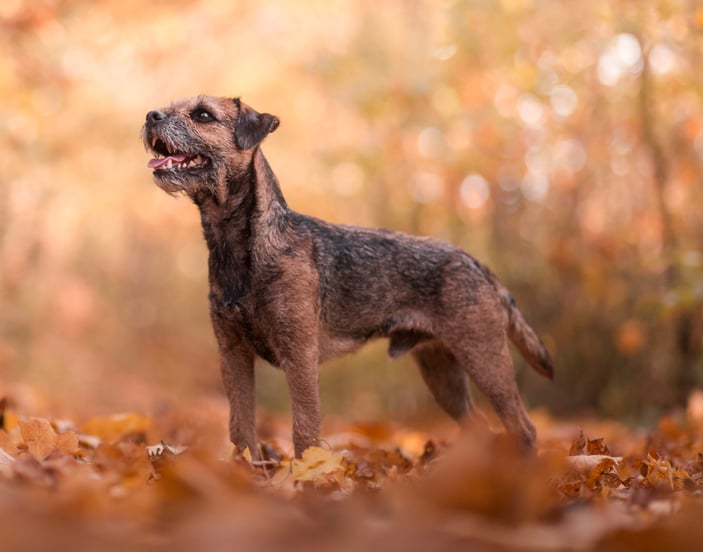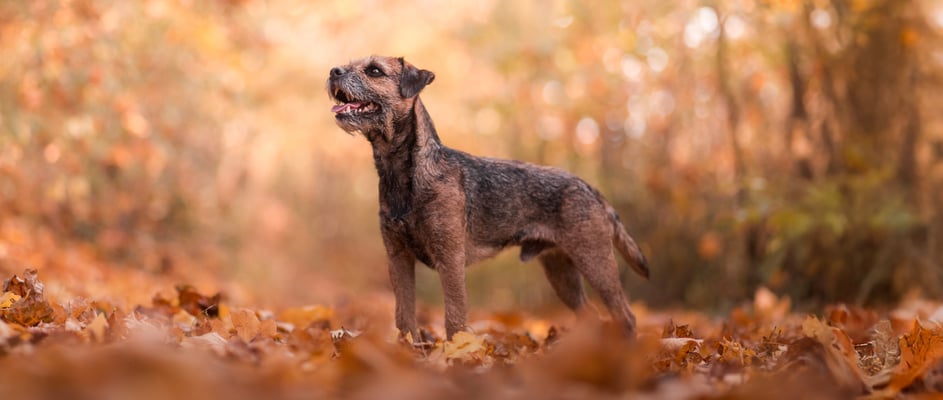The guide to owning a Border Terrier.
Want to know everything there is to know about finding the right dog for you? Submit your email below, and we’ll send you a one-stop guide to help you on your pet-ownership journey.
Jump to:
Stats at a glance.
A history of Border Terriers.
Meet the Border Terrier , the cheeky little working dogs from the border regions of Northumberland.
These determined terriers first worked alongside foxhound packs to chase foxes out of dens. They have a wiry coat, sturdy physique, and big personality , being bred for stamina rather than show.
It is understood that they originated from the Coquetdale Terrier, and their name hints at their origins along the Scottish-English border.
They became a more popular breed and earned an official spot in kennel registries, like the Kennel Club (KC) and the American AKC, once people realised how devoted, bold, and downright lovable they truly are.


How much is a Border Terrier puppy (UK)?
If you’re considering adding a Border Terrier puppy to your family, it helps to know costs can vary. In the UK, you might expect to pay between £800 and £2,000 for a well-bred dog breed from a reputable source. Prices hinge on pedigree, health screenings, and the breeder’s reputation.
Some champion lines may cost more. Choosing your pup carefully gives you the best chance of welcoming a healthy companion.
Here’s what to look for in a reputable breeder:
They’re open to you meeting the sire and dam (puppy parents).
They provide full registration documents and health test results.
They ask you plenty of questions about your lifestyle.
They genuinely care where their litter ends up.
Colours and coat types.
Colours
Like many working terriers, Border Terriers come in a handful of earthy shades. Common colours include red, grizzle-and-tan, blue-and-tan, and wheaten. Their wiry coat serves an important purpose: it’s weather-resistant enough for long days outdoors. This double coat has a dense underlayer with a coarse top layer to keep them snug and dry.
Coat types
There’s just one official type, but coats can vary in tightness of curl or coarseness. The common approach is clipping or hand-stripping to keep them looking neat. Some owners love the tousled “old border” look, while others keep them tidy for shows.





Size and weight.
Don’t let the modest measurements fool you. These sturdy Border Terriers pack a lot of heart. Usually 28-40cm tall at the shoulder, they weigh around 5-7kg.
Their small-to-medium frame is balanced by robust strength, making them perfect for active family life or for folks with smaller homes, provided there’s plenty of exercise and mental stimulation.
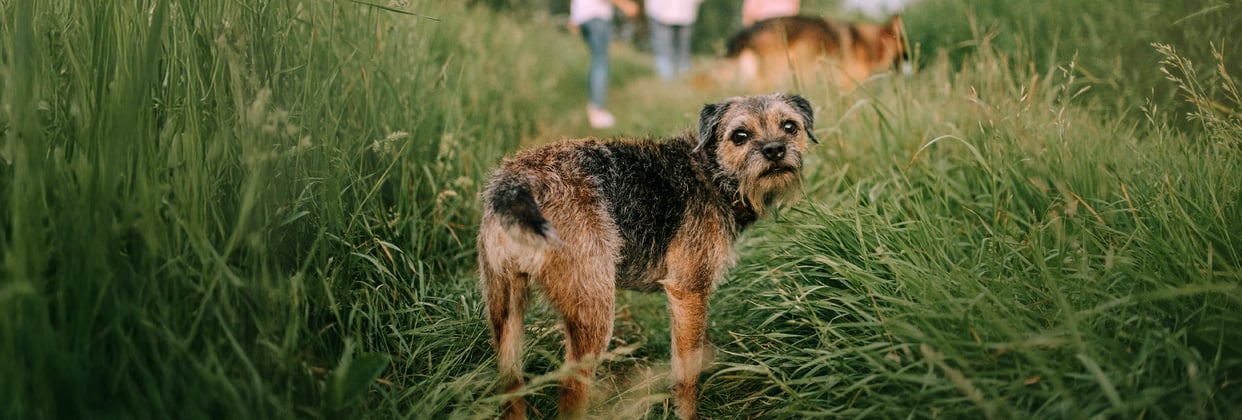

Temperament and behaviour.
Do Border Terriers make good pets?
Absolutely. These breeders and owners rave about how affectionate they can be with their people.
They love exploring the outdoors, chasing scents, and then coming home to relax by your side. As they’re a friendly breed, they often settle well into family pet life, so long as you’re prepared for their playful energy.
Are Border Terriers good with kids?
They can be wonderful with kids of all ages, but they do best with children who understand how to interact respectfully.
Teach gentle play, and these Border Terriers make loyal, protective playmates. Because they’re tough enough to keep up, children find them a fun partner for running around.
Are Border Terriers good with cats?
Thanks to their working terrier instincts, a fast-moving cat might look like a chaseable toy.
However, if you introduce them slowly and ensure everyone feels safe, many Borders adapt well to multi-pet homes. On the plus side, their adaptable nature can shine through once boundaries are established.
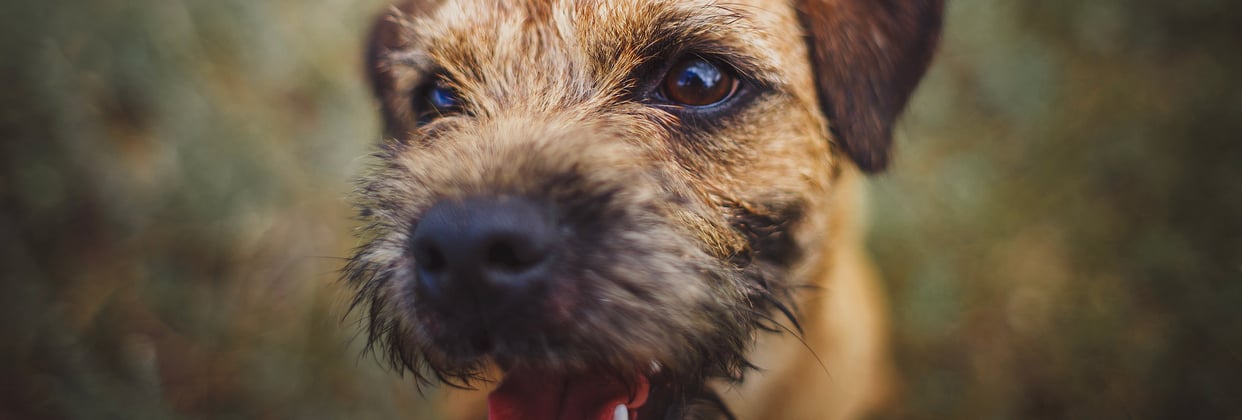

Do Border Terriers suffer from separation anxiety?
These sociable pups do bond tightly with their families. If left alone too often, they might become anxious, especially as a puppy still learning the ropes.
Setting up a reassuring routine and spending quality time can soften any anxious tendencies. Some owners find crate training helpful, along with puzzle toys to occupy them.
Can Border Terriers be left alone?
They’re independent enough to handle shorter periods alone, but try not to stretch it beyond 4-6 hours.
Hiring a dog walker or dropping them at doggy daycare can help. If you’re leaving them for errands, a cosy den, a cheery goodbye, and a treat-dispensing puzzle keep them entertained.
Can Border Terriers live in apartments?
Yes, if given daily walks and mental stimulation. Their energy demands regular outlets like sniffy strolls or indoor games.
Just be mindful that their keen sense of hearing might prompt barking at strange noises. Early training helps them understand when it is or isn’t time for alert-mode.
Do Border Terriers bark a lot?
They can be chatty if bored or excited. As a breed, they’re watchful and won’t hesitate to sound the alarm if something rouses their interest. Consistent training and sufficient exercise can tone down any excessive barking.
Training a Border Terrier.
Training a Border Terrier is a bit like negotiating with a very determined toddler. They’re clever, quick to learn, but not always keen on doing things your way. The key is consistency, patience, and making it worth their while.
Are Border Terriers smart?
Yes, they’re bright and resourceful. They quickly pick up commands, but they also have a mind of their own. Early, positive training with treats and praise tends to work best. Keep sessions upbeat and short to match their attention span.


Shedding and grooming.
Grooming your Border Terrier doesn’t have to be complicated, but it does require some effort to manage their wiry top layer and thick undercoat. Hand stripping once or twice a year keeps them neat. Not a fan of that? Light clipping works too, though it may soften the coat texture.
How often should I brush my Border Terrier?
A quick brush once a week helps remove dead hair. When their coat starts looking overgrown, that’s your signal for a thorough grooming session. Keep their nails trimmed and ears clear of debris. That’s usually enough for a healthy border coat.
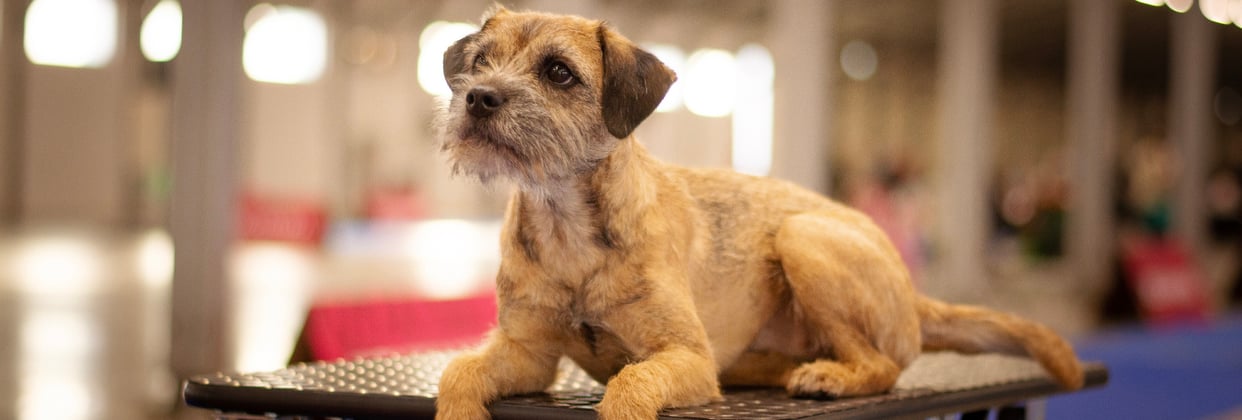

Exercise and mental stimulation.
Although they’re not huge, Border Terriers love to stay busy. Plan for 30-60 minutes of daily exercise, split into walkies or a lively run about in the garden.
Puzzle feeders or sniffing challenges use their brains, too. They still carry the hunting spirit, so activities that let them track or chase can be a hit, if done safely.
Protect those agile legs by starting gently if they’re younger than 8 weeks old. Growing pups need balanced exercise.
With adults, consider dog sports like agility or trailing. They excel using that keen nose. Just be cautious around farmland or wildlife . A vigorously sniffing Border can forget all about your recall if a scent is tempting enough!
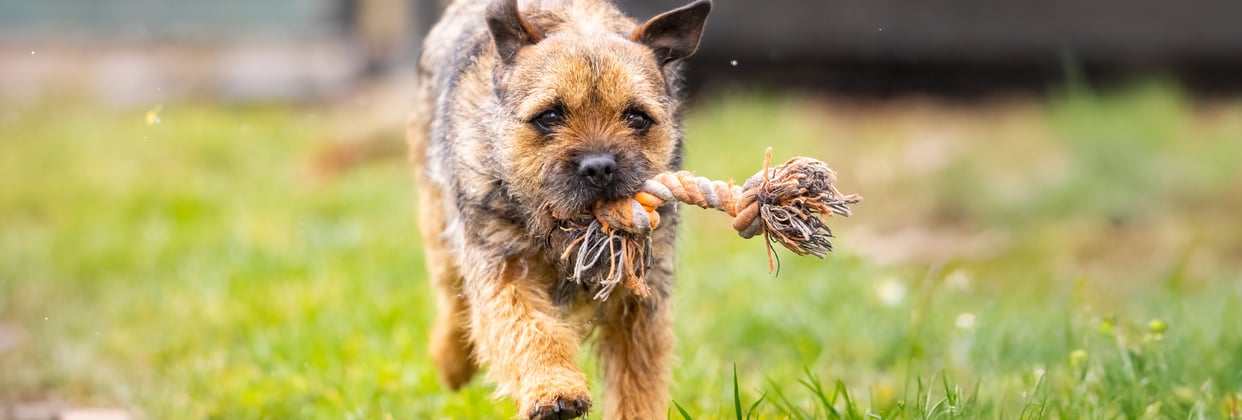

Feeding and nutrition.
A good diet is vital for your Border Terrier. They’ll happily scoff down anything if you let them, so portion control is key.
Typically, an adult might need 1 to 1.5 cups of quality canine food per day, split into two meals. Keep an eye on their waistline to prevent overfeeding. If you’re introducing new food, do it gradually to avoid tummy troubles (like excessive mucus in stools).
Looking for extra ideas on healthy dog meals? Read our guide to fresh dog food to see if homemade or gently cooked meals could suit them.
Common health issues in Border Terriers.
Below is a quick reference table of Border Terrier health issues and typical treatment costs. These are only rough estimates and can vary:


Pet insurance for Border Terriers.
Given their lively nature and potential for breed health concerns like CECS and gallbladder problems, insuring your Border Terrier can be a true lifesaver. Unexpected vet bills pop up, and secure coverage lets you focus on what matters most—your pup’s wellbeing.
At Waggel, we know how important it is to cover breed standards and common issues for your Border Terrier dog breed. Our plans are flexible, and you get:
Lifetime cover for chronic conditions
24/7 online vet triage
Behavioural and nutrition consultations included
Community perks for you and your furry friend
Border Terrier Pet Insurance is a safety net that helps with big, unexpected costs. That way, your dog can enjoy a long, tail-wagging life.
Remember, a well-socialised puppy, plenty of consistent training, and lots of love create a confident adult BT. If you’re looking to join the Border Terrier Club, planning to hit some local shows, or just looking for that perfect, mischievous companion, we hope this guide offers insight.
Here’s to many happy days adventuring with your spirited Border Terrier by your side.
